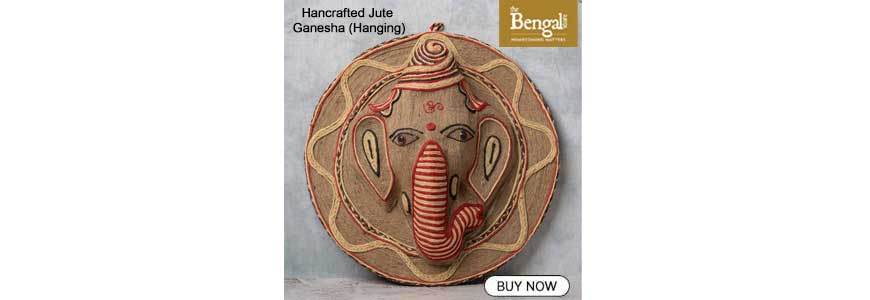Madur Mat Art of Bengal: A story of skill, creativity, and empowerment
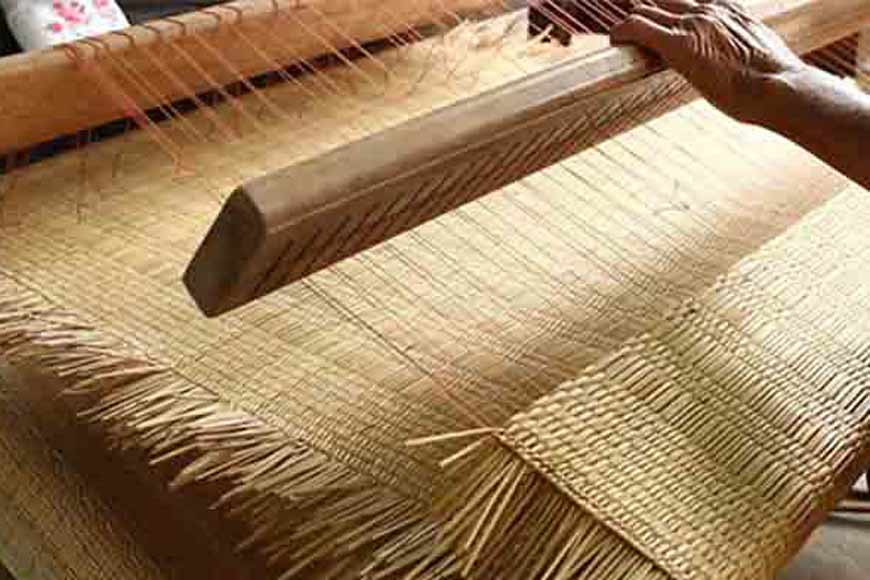
In the olden times, mats were an integral part of the social fabric of Bengal, and Madurkathi mats were used to sit on and as bedding. These mats are non-conductive and sweat-absorbing, making them an essential household item in West Bengal’s hot and humid climate. These mats are also widely used for religious purposes. In the good old times, when guests arrived, it was a ritual to take out and unroll elegant, fresh Madurkathi mats for guests. It was customary to use these mats in cities as well. The tradition of using mats in homes of rural Bengal is still very much in vogue.
In Bengal, the word madur is used as a generic term for floor mats, although it designates mats woven from a specific type of reed. Madurkathi mats, or madur are woven from a reed called madurkottir, or Madurkathi, a sedge of the family Cyperaceae. Madur mat-making is a long-standing tradition, centered around Midnapore district, and is an important part of the rural economy. The mats are woven mainly by weavers of the Mahishya caste, and predominantly by women. This cottage industry contributes significantly to village household income. But the hand-woven mat industry is currently facing an existential crisis.
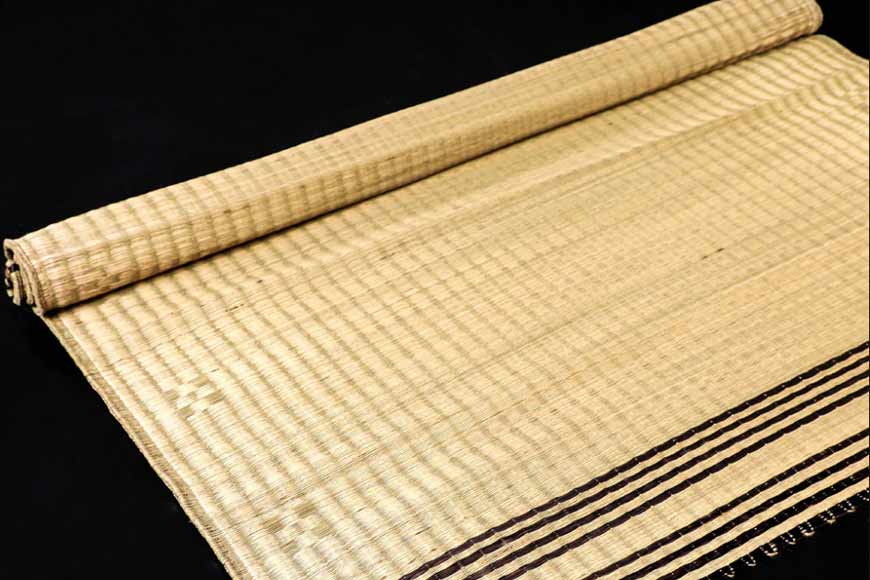
There was a time when Charghat Bazar had a reputation across the state for hand-woven mats. Even a couple of years ago, Charghat wholesale mat market used to bustle with craftsmen and traders at all hours of the day. Around 25 to 30 traders would be engaged in brisk business in the mat market, but today the number of Madurkathi mat dealers has dwindled significantly.
The West Bengal Khadi & Village Industries Board (WBKVIB) has taken up an initiative to develop the skill, capacity and institutions of Madurkathi artisans, facilitate market linkage to augment their earnings, and provide infrastructural support to the weavers helping them to diversify their products into premium lifestyle handicrafts and thus providing sustainable livelihood to hundreds of rural craftspeople.
Gone are the glorious days of Madurkathi mats. Currently, the biggest challenge that this industry is facing is from cheap plastic mats substituting hand-woven mats. Making Madurkathi mats is a time-consuming, intensive and completely natural process. Intricate high-quality mats are woven from a locally grown grass thicket of the genus Cyperus: Cyperus pangorei (formerly Cyperus tegetum) that grows on marshy land in Midnapore. The frequent flooding around Midnapore makes many areas unsuitable for crop cultivation. Grass, sedges and reeds provide a viable alternative for the region's farmers. As a result, the cultivation of Madurkathi grass and the weaving of Madur mats evolved into an important part of the local household economy. At one time, madur sticks were cultivated along the Jamuna River in Machhlandpur aka Maslandpur area, located close to the Tamluk subdivision. Thousands of families living in Charghat and adjoining villages were involved in the cultivation of mat sticks. Maslandpur probably takes its name from the ‘Masland’ mat, the finest quality madurkathi mat.
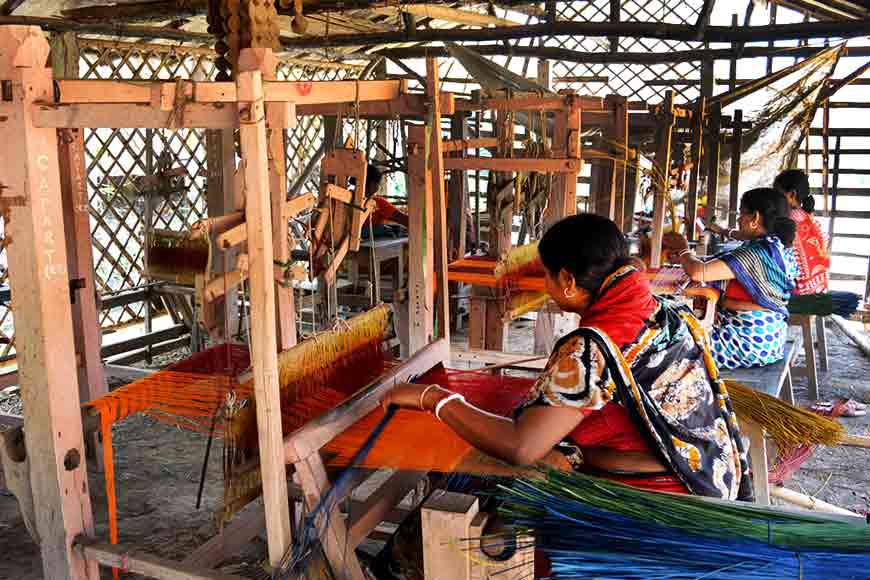
Mat-weaving is an ancient craft in India that dates back to the Indus Valley civilization. Ancient literature including the Atharva Veda, the Shatapatha Brahmana, and the Mahabharata mentions the widescale use of Madurkathi mats by all sections of the society for various purposes. Madurkathi mats are believed to be chaste and families could offer these to hermits and mendicants to sit on and rest if they came knocking on the doors of villagers.
Records from the Medieval Period provide the first information about mat-weaving in the region of Bengal. Mats were of different grades and the finest quality mats were ‘Masland mats,’ which derived its name from the Persian word ‘Masnad’, which means throne. Masland mats originated during the Islamic period when the superfine variety mats with silk weft were produced in Midnapore under royal patronage.
Mats were collected as revenue under the Jaigirdari system. In 1744, Nawab of Bengal, Alivardi Khan issued a charter to the Jaigirdars (a feudal class who collected taxes as a form of revenue) in this regard. As a result, it was obligatory to supply masland mats for use in the Collectorate (district headquarters). Permanent markets for mats were set up in Midnapore. Kasijora and Narajol were the two most important centers of fine masland mat-weaving during this period. Ordinary mats were also woven for the hoi polloi.
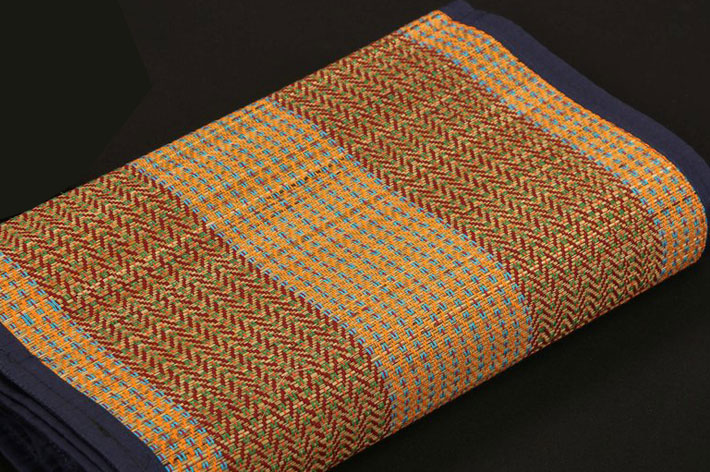
During the British reign, government officials recorded a large number of artisans engaged in making masland mats in Midnapore. According to a census report of 1872, there were 618 skilled workers engaged in mat-making in the district of Midnapore, where mats were one of the main trading items. According to official reports, 4,48,300 mats were manufactured in 1907-1908. As per British records, at the beginning of the 20th century, the price of an exotic masland mat was as high as Rs 100 or more. The finest quality mats at that time were made at Raghunathbari, Kasijora, and Narajol in Midnapore.
Traditionally the weavers make three types of mats: ekh-rokha, do-rokha, and masland. The ekh-rokha madur is a light, thin mat and the simplest one to weave. It is produced on a simple bamboo-frame loom, using cotton thread as the warp and single reeds as the weft. The du-rokha is more complex, with a double-reed weft, and requires greater skill to produce. It is a heavier and thicker mat, superior to ekhrokha in terms of comfort and convenience. Masland is a textured mat featuring decorative patterning and is the finest and most expensive of the three. Weaving these mats require accuracy and experience.
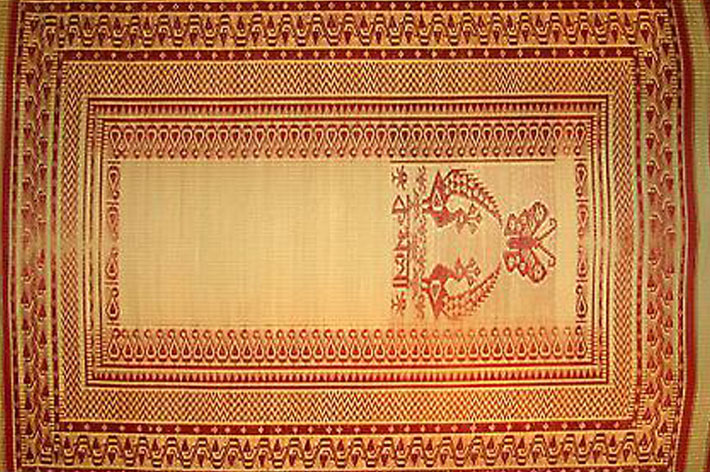
Masland mats are made with superior-quality madurkathi. At least two people are required to weave these mats. One person places the reeds from left to right, alternately laying one thread on top and the next one underneath. The second person repeats this from right to left. When they reach the edge, the threads are turned and the process is continued. The masland mat weaving process is very similar to the technique used to weave saris. Popular masland mat designs include flowers, honeycomb patterns (mouchak), rhomboidal motifs (barfi), and jharna. Madurkathi is also used to make a variety of decorative and functional items, including door curtains, sleeping mats, tiffin-carriers, and handbags.
The mat designs are self-colored, using variation in the natural reed, and can also incorporate dyed reed patterning in black and magenta. The natural colouring of the reeds is used to weave geometric designs, creating a subtle pattern in the finished mat. Madurs are traditionally made using vegetable dyes only. Naturally sourced maroon or black vegetable dyes may be used for further decoration on mat borders. Black dye is produced using Haritaki fruit (Terminalia chebula), and the fruit and bark of the Babla tree (Vachellianilotica). Reddish dye is made from the seeds of the Achiote, or Annatto tree (Bixa orellana), native to Latin America but introduced to India by trade in the 16th and 17th centuries and cultivated mainly as a source of dye. In West Bengal, the tree is known as ‘Rang gachh’ (colour tree).
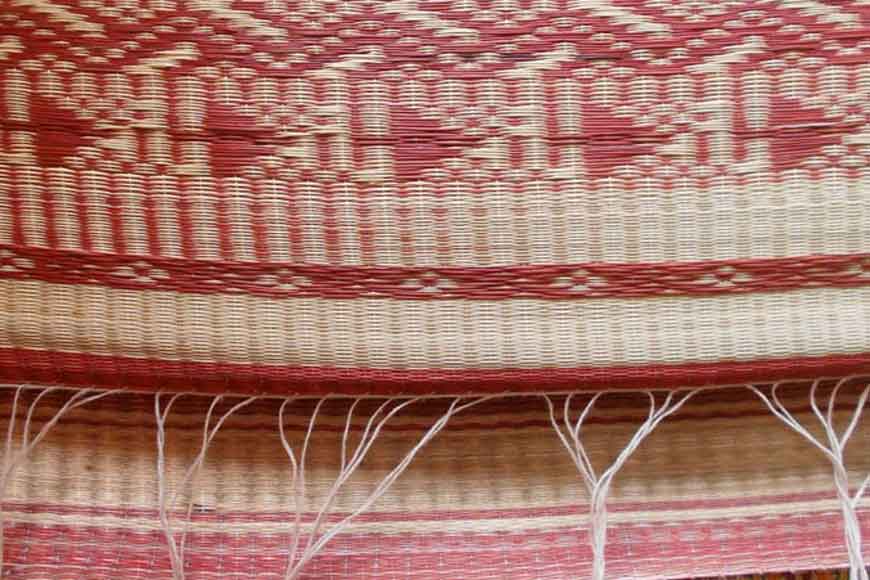
Before dyeing, mat sticks are tied with palm leaves at places where the natural colour is intended to be retained. The bundles are placed in containers filled with dye powder and cold water, which are then boiled. Boiling time differs according to the colour: 10 hours for black, and 24 hours for the reddish dye. The dyed mat sticks are sun-dried before weaving.
Mat-weaving is an ancient craft in India that dates back to the Indus Valley civilization. Ancient literature including the Atharva Veda, the Shatapatha Brahmana, and the Mahabharata mentions the widescale use of Madurkathi mats by all sections of the society for various purposes.
Mat weaving is the primary source of income for 77% of the craftspeople. Around 74% of the weavers make hand-woven mats and the remaining develop loom-based products. Few of the traditional mat-making families still retain the knowledge of weaving a fine variety of exclusive mats locally known as Mataranchi. The loom-based weavers have been organized into units by local entrepreneurs. There are around 40 of these small units across Purba (East) and Paschim (West) Midnapore.
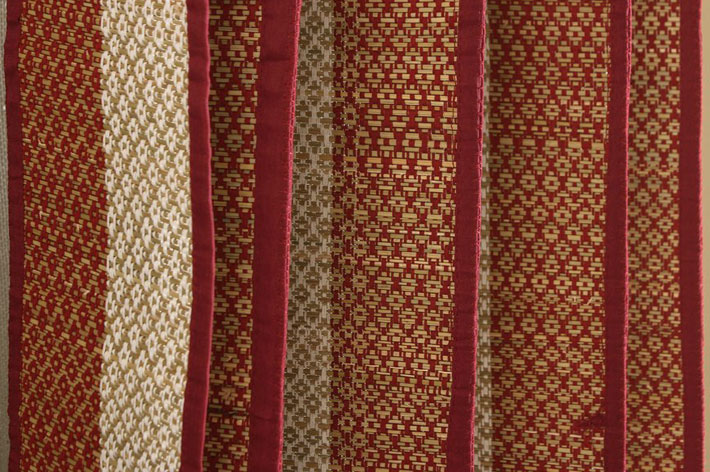
Bhagabanpur Block is the hub of Madurkathi weaving in Purba Midnapore. Barbasudevpur which is the main center in Bhagabanpur is located between Mecheda and Digha. The place is well-connected to Kolkata. Sabang is the largest concentration of madur weavers in Paschim Midnapore. Other important hubs include Pingla and Narayangarh.
Madur is a tradition and pride of Midnapore. Women of this region are highly skilled weavers crafting these mats at home. These traditional mat-weaving families retain the knowledge of weaving this fine variety of masland, which is a highly sought-after handicraft today. These mats are also an integral part of ordinary Bengali households, ideal for daily use, especially during the sweltering heat of summer.
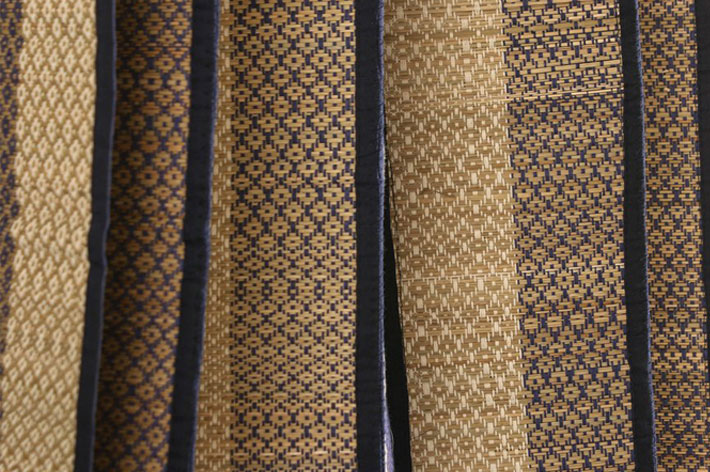
The West Bengal Khadi & Village Industries Board (WBKVIB) has taken up an initiative to develop the skill, capacity and institutions of Madurkathi artisans, facilitate market linkage to augment their earnings, and provide infrastructural support to the weavers helping them to diversify their products into premium lifestyle handicrafts and thus providing sustainable livelihood to hundreds of rural craftspeople. Besides making folding mats, these units have modernized their styles into making various utility items and accessories such as bags, folders, table mats, runners, coasters, boxes etc. With the shift in market needs, the weaves are now also used for making decorative and utilitarian items. On March 28, 2018, Indian Patent Office granted the Government of West Bengal a Geographical Indication (GI) Tag for Madurkathi, under registration no. 567 in respect of handicrafts. This has definitely boosted the morale of the craftspeople involved in this trade.







